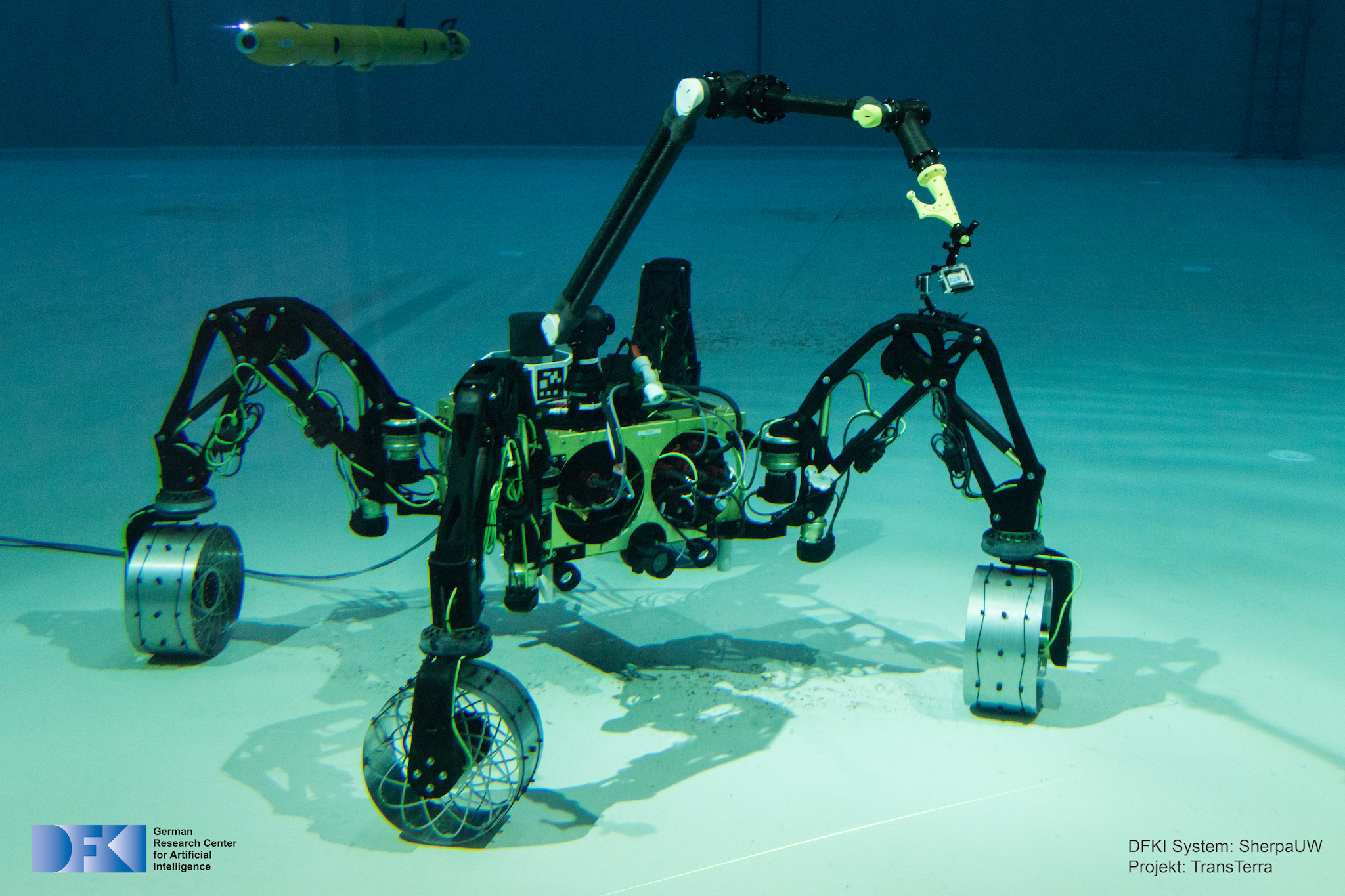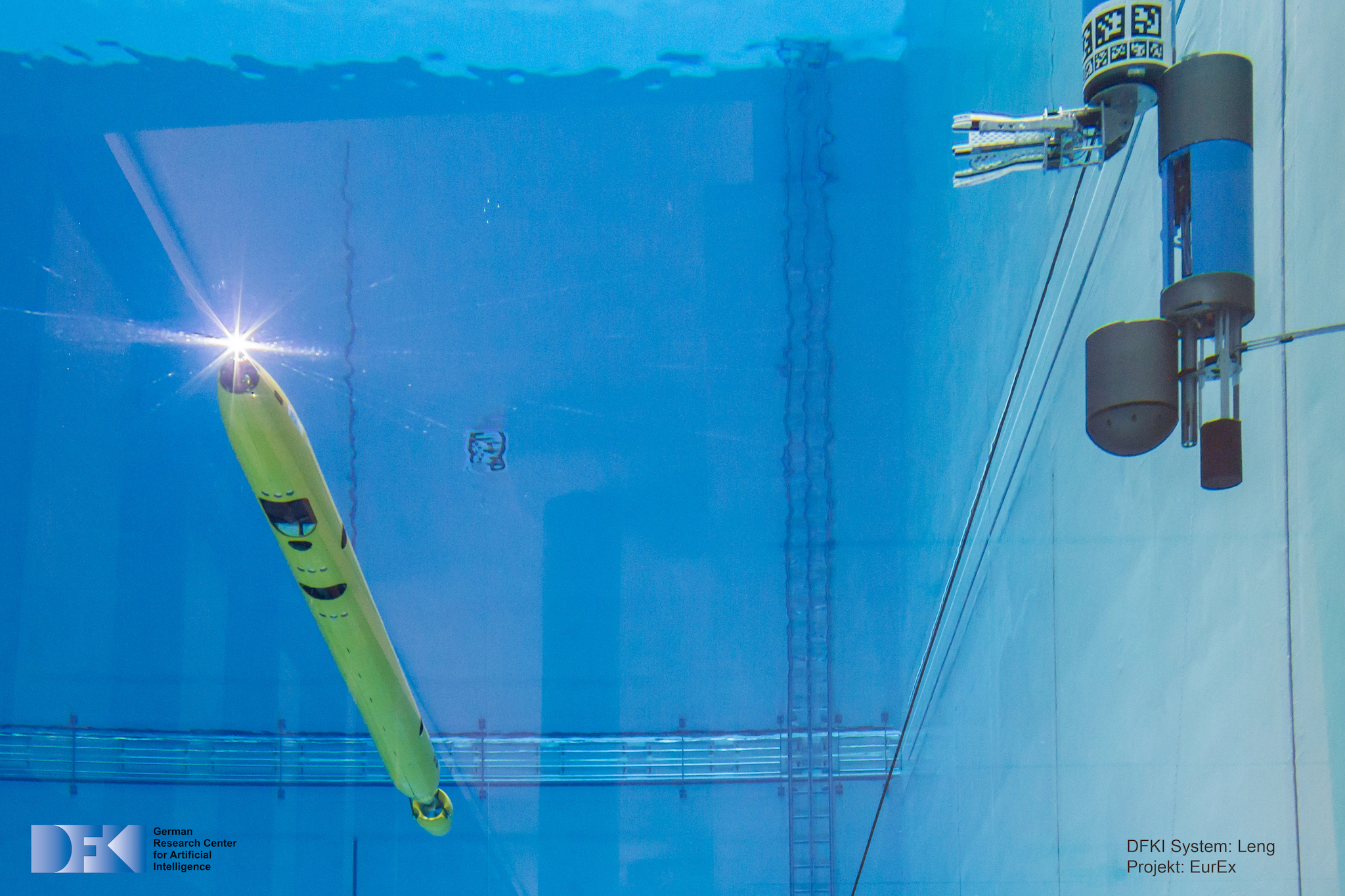Underwater robot does not need help on the ocean floor
Robots can perform jobs underwater that are too complex or dangerous for humans. That is, if they can manage on their own, because no one can help them down there. The REMARO project works on its control systems and trains PhD students in programming work.
Robotic technology can be very useful for the maintenance of ships and infrastructure located in the water. The help of robots is also a godsend in combating oil spills in the deep sea and scientific explorations of the ocean floor. For humans, these are often very dangerous missions, while it means nothing for a machine. The problem with existing underwater systems is that they usually work remotely. This limits the possibilities, because of poor visibility underwater and unpredictable conditions.
“We therefore want to make the robots autonomous, so that they can respond independently to situations they encounter,” says researcher Carlos Hernández Corbato of the Cognitive Robotics department. He compares the work of underwater robots to that of the Mars rovers, which studies the geology of the red planet.
“It takes a team of engineers to configure one new task of the Mars rovers. We want to shorten that process: by bringing all the engineering knowledge into the robot control.”
The ideal underwater robot finds its way into the depth itself, responds adequately to obstacles or strong currents and returns to base in time before its battery is empty. For this, underwater robots need brains with an integrated design. The research partners who work together in REMARO (Reliable AI for Marine Robotics) have the knowledge to do this.

Carlos Hernández Corbato
Reliable AI
The European project, which is funded from the Horizon 2020 program, is a training by research program. Over the next three years, fifteen PhD students will be taught the techniques that are being developed to make robots more autonomous and reliable. It should yield the next generation of underwater robot specialists.
The Delft input is mainly focused on artificial intelligence. The Cognitive Robotics department recently hired Gustavo Rezende, a Brazilian PhD candidate supervised by Hernandez and his colleague Laura Ferranti. He will work on the control software that helps autonomous underwater robots to plan their actions. Under the leadership of Hernández, researchers are working here on activating symbolic knowledge. This provides a robotic brain with the ability to reason about abstract concepts, such as an “error”. The machine can apply these to a wide variety of situations. This shortens the programming time, because the machine does not have to be configured separately for each potential error.
The training also focuses on mathematical methods for validating the reliability of the software. That's important, Hernández explains. "You want to be sure in advance that your robot will not bump into an object when operating underwater."
In addition to TU Delft, the following partners are involved in the REMARO project.
- Denmark: IT University of Copenhagen, EIVA A / S, Aarhus University
- Germany: University of Bremen, ROSEN Group, RWTH Aachen University, Kraken Robotik GmbH, DFKI
- Norway: University of Oslo, DNV GL Group
- Portugal: University of Porto, Ocean Scan MST, Instituto Superior de Engenharia do Porto
More information: https://remaro.eu
You want to be sure in advance that your robot will not bump into an object when operating underwater.
Carlos Hernández Corbato


